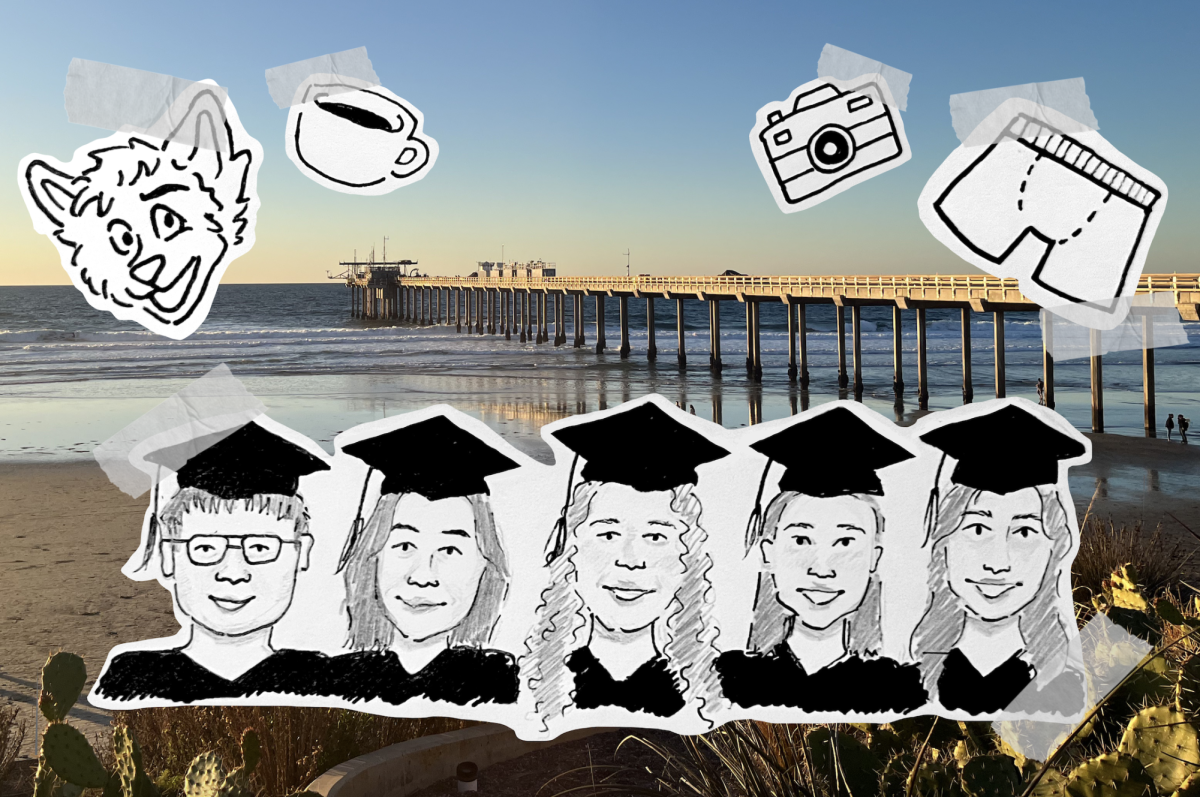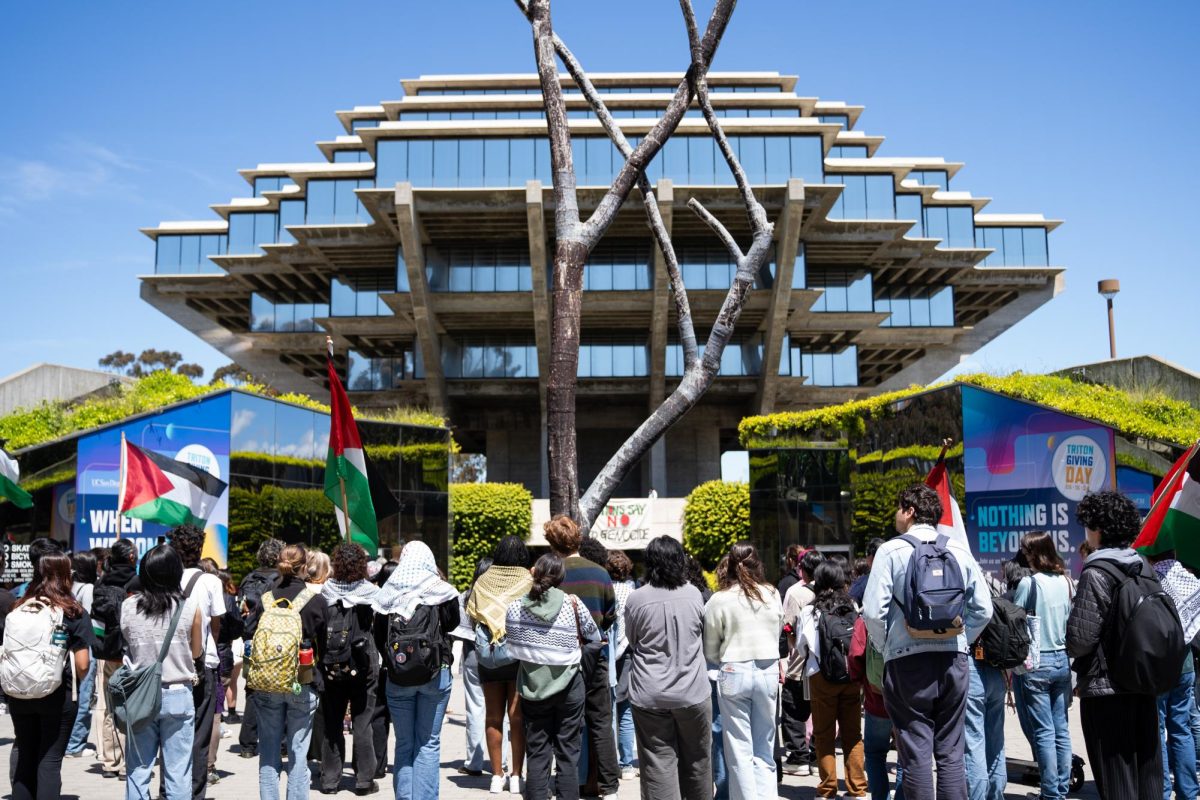It’s amazing how history repeats itself.
With the advent of the new Bush administration, the recession and the “”war against terrorism”” in the Middle East, the start of the millennium has been almost too similar to a period two decades ago: the 1980s.
Yes, we are now practically reliving it. Just look around at all the resurfacing ’80s clubs, radio stations and even television shows such as “”That 80’s Show.””
Despite the economic and political turmoil of the ’80s, the decade produced some quality, diverse and creative entertainment that has yet to be matched. In the musical arena, brilliant and enduring artists emerged such as Madonna, U2, Sting, Bon Jovi and Journey.
In fact, it is probably the events of the decade, such as the eight-year Iran-Iraq War, the end of the Cold War and the discovery of AIDS, that caused a need for diversion. This social turmoil was coupled with the dawn of a new technological era.
MTV
“”The ’80s brought in a tremendous emphasis on surface appearances,”” said UCSD ethnic studies professor George Lipsitz. “”They used to talk about movies in the ’80s as being built around the look, the hook and the book. And what they mean by that is a real emphasis on visual imagery calling attention to itself.””
So it’s no surprise that Music Television was created in 1981, linking music and image like never before. Single-handedly changing the face of the music industry, MTV provided a new visual medium for musical consumption and marketing.
For the bands, singers and musicians, it was either a blessing or a curse.
“”In order to promote your album, you need to have videos. MTV is really more of a commercial disguised as an entertainment program,”” said UCSD sociology professor Ryan Moore.
Many musical artists took advantage of it; an obvious example is Michael Jackson, whose elaborate videos cost millions to produce. MTV became so important that the commercial success of a band depended — and still continues to depend — almost entirely upon videos as opposed to the musical quality of the songs.
Artists who choose not to use music videos may suffer in record sales and popularity, but they may go on to prove that good music does not lie in the hands of Carson Daly.
Hip-hop and R&B
Some of the biggest musical forces that came out of the ’80s included hip-hop and R&B — genres that continue to enjoy national success.
R&B introduced immortal arists such as Michael Jackson and Prince.
“”Michael Jackson basically broke the color barrier on MTV. Before him, MTV would not play videos by black artists,”” Moore commented.
Hip-hop and rap evolved in the ghettos of southern Bronx in New York and started to gain more acceptance with groups such as Run-DMC. Their videos were the first rap videos to be played on MTV and their albums were the first in the hip-hop genre to go multiplatinum with the 1986 release of “”Raising Hell.”” Public Enemy came blazing into the late ’80s with their raw and biting blend of politically powered rap and became one of the most controversial and influential groups ever.
“”Hip-hop makes an art form out of talking back,”” Lipsitz said. “”At a time when the general culture of the society was celebrating wealth and how great things were, hip-hop was talking directly about what’s happening in the inner cities: unemployment, police brutality, racism — things that at that time weren’t being talked about at all in the mainstream media. Chuck D of Public Enemy used to say that hip-hop is black people’s CNN. It’s an alternative network that tells the news.””
Hip-hop was meant to be an alternative to the mainstream media and it is ironic to see it become so much a part of the mainstream in later decades.
New Wave
The “”new wave”” genre of music exploded in the ’80s.
Artists such as Blondie and the Talking Heads were among the first to popularize it. New Wave actually has its roots in the huge British punk scene that developed in the late ’70s from bands such as the Sex Pistols and The Clash.
“”Record companies can’t market punk rock to a mass audience,”” Moore explained. “”So new wave comes about because they are trying to sell bands that are kind of influenced by punk and kind of alternative but not the kind of guitar-driven, violent, hardcore type of bands. Billy Idol is a perfect example.””
Mainstream new wave tended to be fairly upbeat and melodic with dancey hooks, and was often characterized by the use of synthesizers. Probably the most visible popular new wave band was Duran Duran, the essential “”boy band”” of the ’80s with their charming good looks and songs like “”Rio”” and “”Hungry Like a Wolf.””
New Order successfully linked new wave with dance music through such classics as “”Blue Monday.”” There was also a more melancholy, lyrical and darker side of new wave exemplified by Depeche Mode and The Cure, who were very distinct and exceptionally creative bands that have lasted through the years and are still going strong with successful tours and albums.
Heavy Metal
There’s no avoiding the impact of heavy metal. Whether you love it or hate it, heavy metal made a real impression in the ’80s with such wildly popular bands as Motley Crue, Def Leppard, Poison, Guns ‘N’ Roses, AC/DC and Van Halen.
Many of us now probably dismiss the ’80s hair bands as a screaming epitome of excess and androgynous fashion trends, but at the time, they had a lot of dedicated fans who were passionate about the music. And few can say that bands such as Van Halen didn’t produce some powerful music. For those who are skeptical of glam metal’s melodic powers, look no further than Def Leppard’s powerful anthems “”Love Bites”” and “”Hysteria.””
Hair bands were probably the most visible, but Moore explained that “”in the ’80s, the American scene kind of splinters off in two directions: glam metal, and then you have the whole underground like Metallica, Slayer, Megadeth and Anthrax.””
This obscure and darker underground metal scene made a deeper impact on its fan base.
“”There’s a difference between the music that did really well commercially and the music that young people were really passionate about and really identified with,”” Moore said. “”People aren’t just buying records, [they] are creating a whole subculture around the music, [such as] having your hair long and wearing denim jackets.””
Films
On top of all the great music, who could forget all the brilliant films that came out of the ’80s, reviving and revamping cinema forever?
Advances in technology during the decade led to the innovative use of special effects that produced such landmark films as “”E.T.,”” “”Terminator,”” “”Aliens”” and “”Back to the Future.”” Although the movie phenomenon known as “”Star Wars”” began in 1977 with the first installment of the original trilogy, it is most commonly associated with the early ’80s with the release of “”The Empire Strikes Back”” in 1980 and “”Return of the Jedi”” in 1983.
The decade is also fondly remembered for bringing the teen audience such entertaining coming-of-age movies as “”St. Elmo’s Fire,”” “”The Breakfast Club,”” (whose stars were collectively known as the “”Brat Pack””) “”Pretty in Pink,”” “”Sixteen Candles,”” “”Ferris Bueller’s Day Off”” and “”Fast Times at Ridgemont High.””
Of course, the ’80s would not have been complete without Tom Cruise dancing and playing air guitar in his underpants to Bob Seger in “”Risky Business,”” propelling his career skyward and later to superstardom with such movies as “”Top Gun”” and “”Rain Man.””
There were also a lot of action-inspirational movies featuring masculine white males saving the world or beating up other people, such as “”Rambo,”” “”Rocky”” and “”Raiders of the Lost Ark.””
Moore said that this trend goes back to the Vietnam War and the backlash against the ’60s.
“”The loss of the Vietnam War [was] very emasculating, a threat to the collective manhood of the U.S. And so you have these working class, white, male characters who go back to Vietnam to basically redeem the war that’s been lost,”” Moore said.
But whatever theme or category the films of the ’80s were in, they set a standard for special effects and million-dollar budgets that remains to this day.
“”The big thing [was that] you had more and more movies that are made to be blockbusters, big name stars with saturation marketing,”” Lipstiz said. “”But I think that also they produced a need and a market for smaller films — [ones] that show a broader range of American society and world society … that sometimes surprisingly became big hits, like ‘Desperately Seeking Susan,’ which was Madonna’s first hit.””
Video Games
The greatest invention for the purpose of continuous distraction would have to be electronic games. Where would the world be without such addictively fun sources of entertainment and virtual reality to escape to?
True, arcade and video games started in the late ’70s with “”Pong,”” “”Space Invaders”” and “”Asteroids,”” but it was really the ’80s that saw such games explode into popularity and become an essential part of pop culture, fueling a highly successful industry.
1980 witnessed the release of the immortally popular craze that was “”Pac-Man,”” and the introduction of the most beloved video game hero of all-time, Mario, in Nintendo’s “”Donkey Kong.””
The industry proved it was here to stay with the development of “”Tetris”” in 1985 and the release of the Nintendo Entertainment System video game console packaged with the classic “”Super Mario Brothers”” and a light-gun (remember “”Duck Hunt””?).
Even with the elaborate graphics and powerful technology of today’s video games, the classics remain some of the most enjoyable and addicting games ever produced due to their innovation and superb gameplay.
The impact of video games has been phenomenal, especially with the younger generation growing up in the ’80s. The arcade quickly became one of the “”cool”” places to hang out. Video games possessed the power to make you scream, jump and practice hand-eye coordination instead of just mindlessly staring at a screen.
“”[Video games are the] perfect capitalist enterprise,”” Moore said. “”All you need is the actual machine. People pump money into it just for the experience, [they] don’t have to give anything in return, not even … a stuffed animal. It’s a good symbol of both the ’80s and today [being] the ultimate entertainment for people with low attention spans. [It’s] a perfect example of a culture that’s all A.D.D.””
Resolution
If the public wanted a good diversion from the dismal events and uncertainty of the world, it certainly got what it wanted — and more.
Entertainment perpetuated and fueled the greed and excess of the ’80s.
“”The boundary between the media and society has totally imploded by the 1980s,”” Moore said. “”There is no difference between popular culture and reality.””
“”The thing I think that characterizes the ’80s the most is the backlash against the ’60s,”” Moore continued. “”It was a culture which celebrated greed and made fun of compassion. The whole pro-business, free market culture of the ’80s gave us what we have today, saturated with commercials, media, celebrities. More than any other decade, the ’80s contributed to the commercialization of society.””
But for the entertainment-lover, the 1980s were a heavenly feast for the ears, eyes and hands. From pop and rock to R&B and hip-hop, the decade gave birth to some of the best music ever of almost every genre, treated our eyes to groundbreaking special effects in films and gave us a brand-new form of interactive entertainment in video games.
Love the decade or hate it, our generation can point to the 1980s as a more familiar origin of the state of popular culture today.







